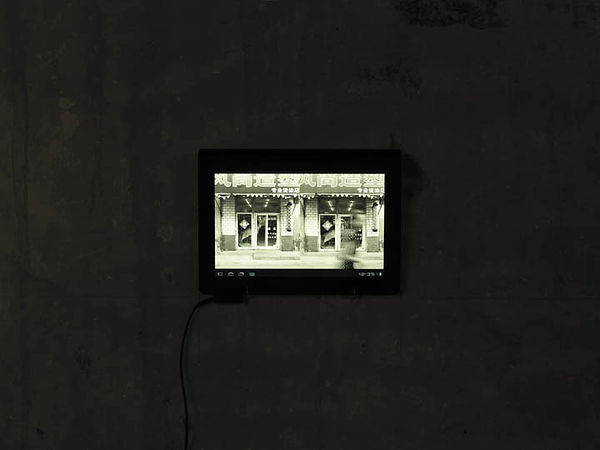2012
Moment, Moving Moments explores the historic and evolving identity of Dashilar, a 600-year-old hutong, through still and moving images. Featuring ten individuals and ten façades, the series examines the intersection of tradition and modernization, inviting viewers to reflect on what once was, what is, and what could be.
Each portrait diptych pairs a still image—highlighting the formal qualities of a person or space—with a moving image that emphasizes content, such as with personal narratives or urban activity. This technique created a dialogue between the static and the kinetic bringing out the unique dynamics of the city.
The series also explores the paradox of movement within stillness, where light and shadow suggest subtle atmospheric shifts. Day and night studies further emphasize these qualities, capturing the essence of Dashilar’s transformation over time.
This work was commissioned by Beijing Design Week with Creative Director Aric Chen.
Moment, Moving Moments | Animal Trainer © CYJO from CYJO on Vimeo. © CYJO

Peking Opera Singer, 2012 © CYJO

Art Teacher, 2012 © CYJO

Vintage Bookshop Owner, 2012 © CYJO

"The factory building that Dashila(b) selected served as a repurposed site for the commissioned work Moment, Moving Moments by the artist CYJO, who conducted ethnographic research in the Dashilar neighborhood. In her diptych, she presented a portrait still and a video of interviews with residents and local business-owners. Her work presents layers of local history, both in the materiality of the walls, preserved from its days as a factory, and in the narratives told through the video. These personal stories focused on the changing neighborhood and the relationship to tradition. This was made perhaps most evident in the portrait of the animal trainer, whose profession (shoyi) relates to the proximity to the imperial palace, which the Dashilar neighborhood is adjacent to. For thousands of years, the animal trainers for the imperial palace resided, trained and passed on their craft in Dashilar. The artwork thus integrated the art space in its physical materiality with the urban space and its local history.” - Jane Ren, Senior Scientist of Social and Cultural Geography at the University of Zurich, excerpt from "Engaging Comparative Urbanism | Art Spaces in Beijing and Berlin, Bristol University Press, 2021
The Factory in Dashilar, Beijing Design Week with Creative Director Aric Chen, Beijing 2012

The Factory in Dashilar, Beijing Design Week, 2012

The Factory in Dashilar, Beijing Design Week, 2012

The Factory in Dashilar, Beijing Design Week, 2012

The Factory in Dashilar, Beijing Design Week, 2012

The Factory in Dashilar, Beijing Design Week, 2012

Yangmeizhu in Dashilar Beijing Design Week with Creative Director Beatrice Leanza, Beijing, 2013

Yangmeizhu in Dashilar, Beijing Design Week, 2013